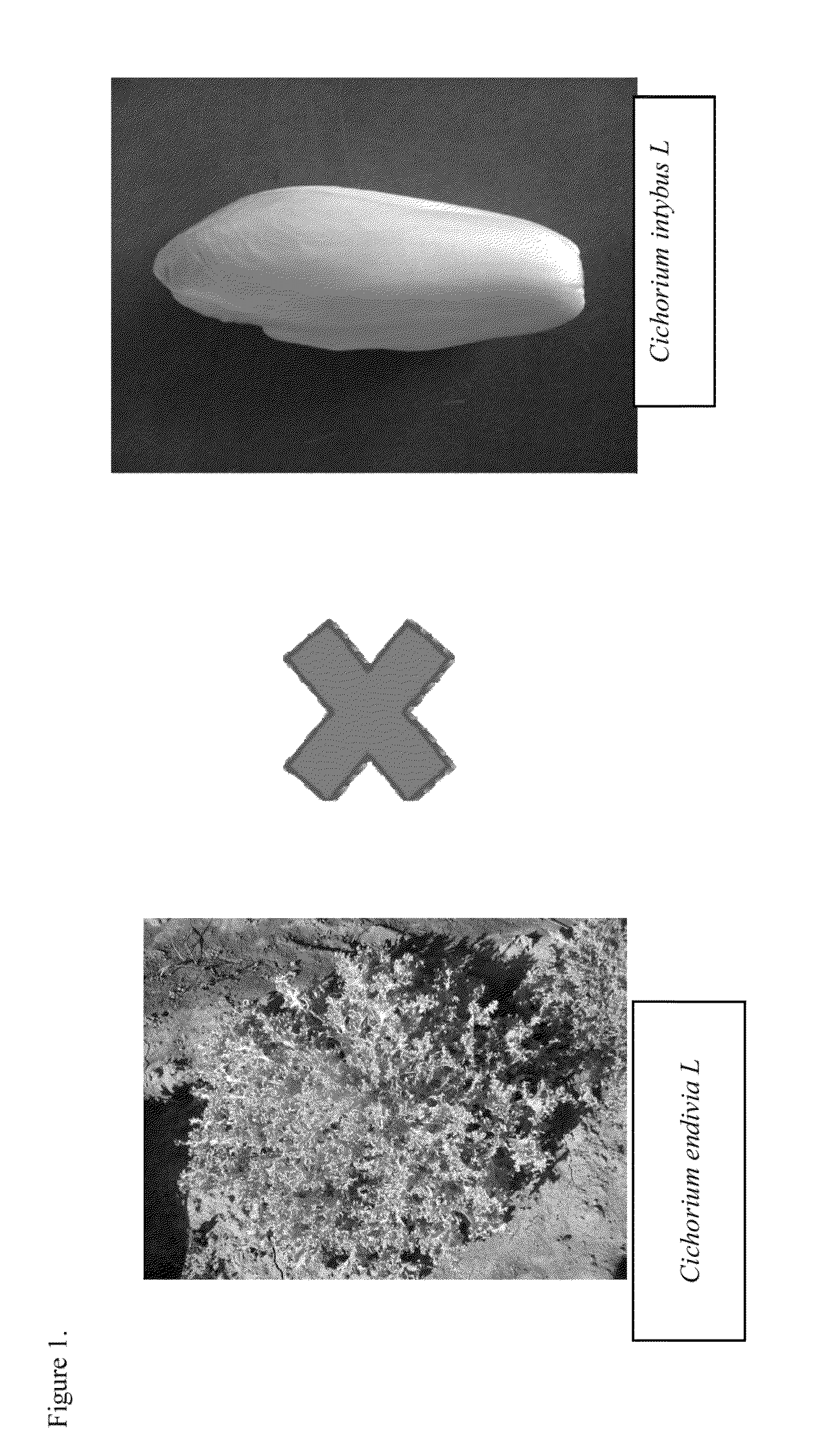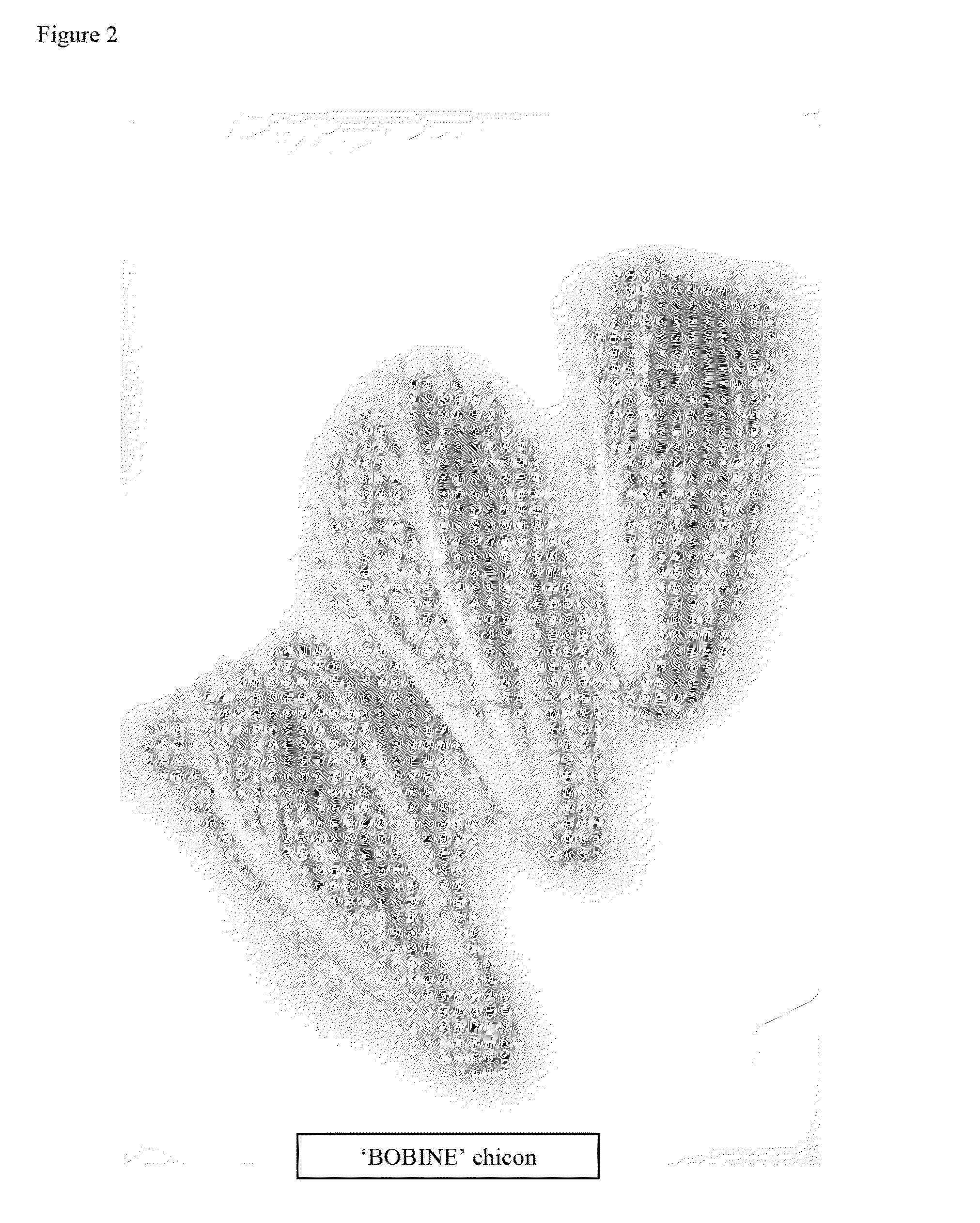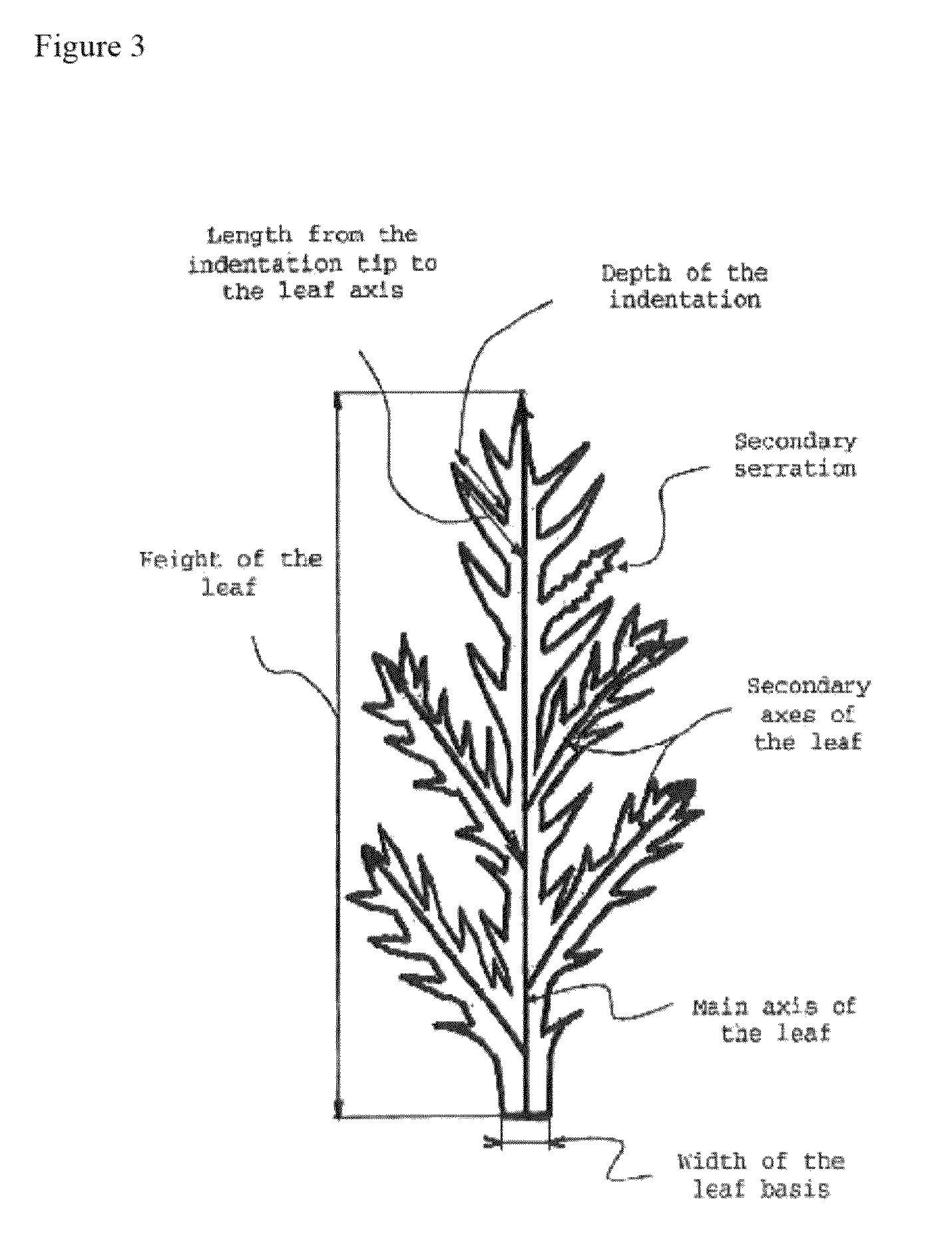Witloof chicory bobine
a technology of chicory bobine and cultivar, which is applied in the field of chicory cultivar, can solve the problems that new industrial investments that should be specifically adapted to the production of new plants of the i>cichorium /i>species cannot be economically compatible with the market, and achieve the effects of reducing the number of leaves, improving shelf life, and reducing the number of plants
- Summary
- Abstract
- Description
- Claims
- Application Information
AI Technical Summary
Benefits of technology
Problems solved by technology
Method used
Image
Examples
example 1
Parental Breeding and Selection
[0111]To create the 17.1 and 11929.07 parental lines, a first batch of F1 plants was created from a cross between female plants of the variety Videna of the Cichorium intybus L species having tuberous roots and a batch of male plants of the variety Grosse Pommant Seule of the Cichorium endivia L species (FIG. 1). A second batch of F1 plants was created from a cross between female plants of the variety 1089 of the Cichorium intybus L species having tuberous roots and a batch of male plants of the variety Grosse Pommant Seule of the Cichorium endivia L species.
[0112]Both F1 generation hybrid plant populations resulting from said cross-breedings were sown and grown up to a 3 leaf stage, followed by an 8 week phase of vernalization at 5° C. so as to obtain bolting ability. These F1 plants were then self-fertilized in heated greenhouses in the presence of flies that carry out the self-fertilization. The F2 seeds obtained thereof were sown in the field, for...
example 2
Breeding and Selection of ‘BOBINE’ Variety
[0118]Both plants 17.1 and 119729.07 used in the creation of the ‘BOBINE’ cultivar are derived from the previously obtained plants having the GPI phenotype, 17.1 having a yellow limb while 119729.07 has a red limb.
[0119]In a first step, plants 17.1 and 119729.07 were crossed to generate F1 plants. In order to increase the number of plants available to choose for the best phenotype selection, the F1 plants were self-pollinated to create F2 plants. About 1000 plants were obtained and forced, among which only 15 presented the phenotypic characteristics that the breeder was looking for after forcing, including yellow limb and very high indentations. The selected plants were self-pollinated and again, in the population obtained and submitted to the forcing culture, only 6 plants were selected based on the yellow limb and numerous and deep indentations. These 6 plants were self-pollinated to obtain F4 plants that were considered sufficiently homog...
example 3
‘BOBINE’ Morphology
[0122]Witloof chicory cultivar ‘BOBINE’ has the following morphologic and other characteristics (based primarily on data collected at Limagrain station, 62182 Villers Les Cagnicourts, France, for the cultivation step and Vilmorin breeding station, 49250 La Ménitrè, France for the forcing steps, all experiments done under the direct supervision of the applicant). See Table 1 for a summary of measured characteristics.
[0123]
TABLE 1Chicory Morphologies.ParentParentMorphology‘Ecrine’17.1119729.07‘BOBINE’Adult Plants Under Field ConditionsTime of FloweringMediumNANAEarlyLeaf LengthShortShortLongShortLeaf ColorOnly greenOnly GreenNAOnly GreenLeaf Color IntensityLight greenNANALight greenAnthocyanin on Leaf BladeAbsentAbsentPresentAbsentFoliage AttitudeErectErectHorizontalHorizontalMale SterilityNoneNoneNoneAbsentSeed ColorWhiteWhiteWhiteWhiteBolting ResistanceStrongNANAMediumPlants Grown Under Forcing ConditionsLengthMediumShortLongMediumWidthLargeNANAMediumWeightMore th...
PUM
| Property | Measurement | Unit |
|---|---|---|
| temperature | aaaaa | aaaaa |
| temperature | aaaaa | aaaaa |
| temperature | aaaaa | aaaaa |
Abstract
Description
Claims
Application Information
 Login to View More
Login to View More - R&D
- Intellectual Property
- Life Sciences
- Materials
- Tech Scout
- Unparalleled Data Quality
- Higher Quality Content
- 60% Fewer Hallucinations
Browse by: Latest US Patents, China's latest patents, Technical Efficacy Thesaurus, Application Domain, Technology Topic, Popular Technical Reports.
© 2025 PatSnap. All rights reserved.Legal|Privacy policy|Modern Slavery Act Transparency Statement|Sitemap|About US| Contact US: help@patsnap.com



